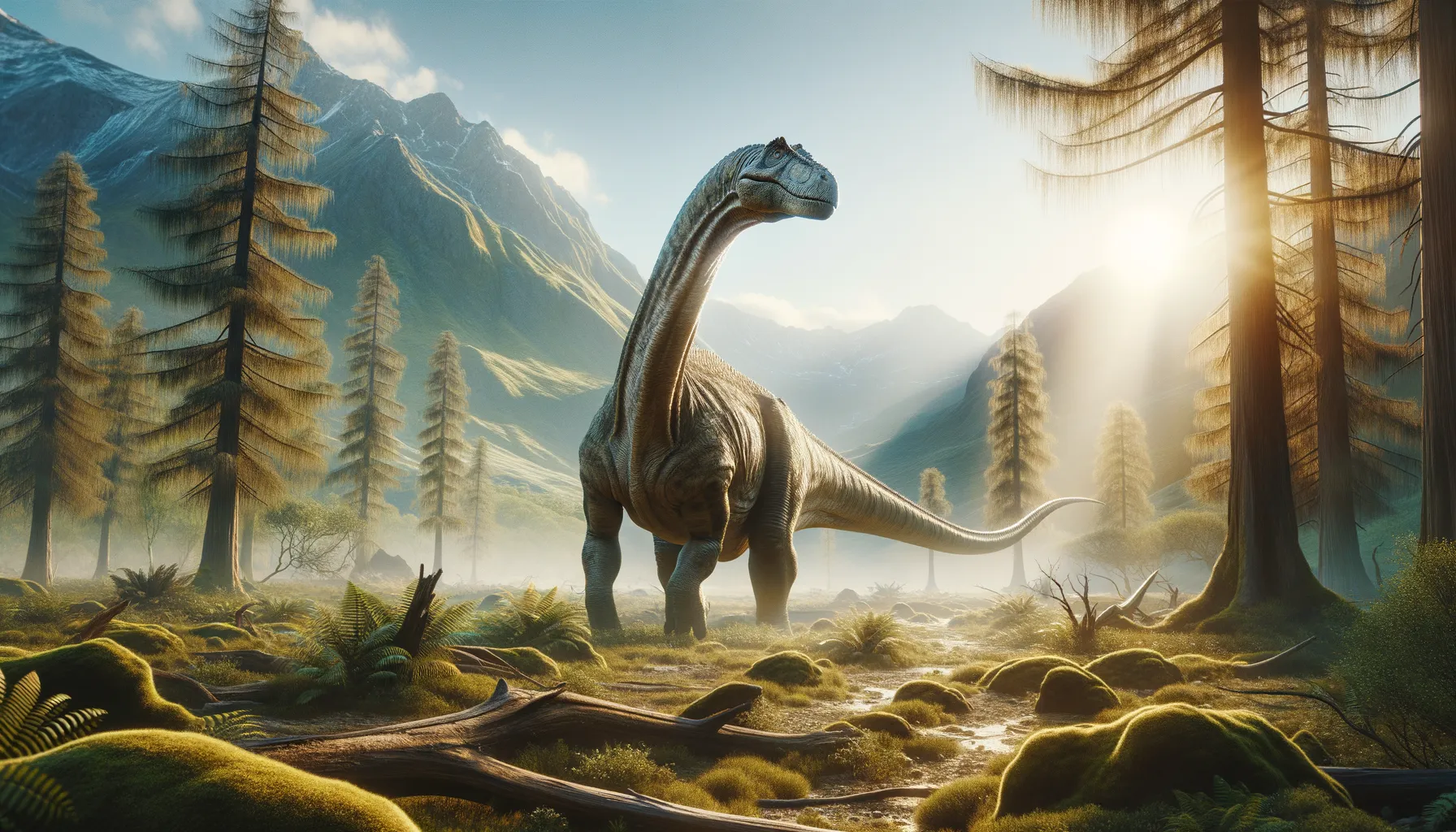
Pukyongosaurus
Graceful giant of the ancient world.
Period
Cretaceous
Length
Could reach up to 25 meters long.
Height
Approximately 4 meters tall.
Weight
Estimated to weigh around 8,000 kg.
Pukyongosaurus was a large, long-necked dinosaur that lived during the Early Cretaceous period. It belonged to the group of dinosaurs known as sauropods, recognized for their massive size, long necks, and tails. Fossils of Pukyongosaurus have provided valuable insights into the diversity of sauropod dinosaurs in Asia. Its discovery expanded the understanding of dinosaur distribution across the continents during the Cretaceous.
Diet
This dinosaur was a herbivore, feeding primarily on plant material found in its environment. Its long neck allowed it to reach high vegetation, giving it access to food sources other herbivores couldn't reach.
Hunting
Being a herbivore, it did not hunt other animals but likely used its size and neck to forage for various types of plants. It may have needed to constantly move in search of abundant vegetation to sustain its massive body.
Environmental challenges
Pukyongosaurus faced challenges such as finding sufficient food in changing climates and landscapes. It likely had to migrate to new areas when resources became scarce. Predators were a consistent threat, requiring these dinosaurs to use their large size and group behaviors for protection. Environmentally, they might have dealt with natural disasters like floods, which could impact their habitats.
Speed
Estimated to be a slow walker due to its large size.
Lifespan
Likely lived several decades, typical for large dinosaurs.
First discovery
Discovered in South Korea in the 1990s.
Fun Facts
- Pukyongosaurus was a long-necked dinosaur that lived during the Early Cretaceous period, about 120 million years ago.
- This dinosaur was discovered in South Korea, making it one of the few dinosaurs known from this region.
- Pukyongosaurus belonged to a group of dinosaurs called sauropods, which were known for their massive size and long necks.
- Despite their large size, sauropods like Pukyongosaurus were herbivores, feeding primarily on plants.
- The discovery of Pukyongosaurus helps scientists understand more about the diversity and distribution of dinosaurs in Asia during the Cretaceous period.
- Pukyongosaurus is named after Pukyong National University, where some of the researchers who studied this dinosaur were based.
- Fossils of Pukyongosaurus include large vertebrae and other bones that help paleontologists learn how these ancient giants lived.
Growth and Development
Pukyongosaurus hatched from eggs and underwent significant growth to reach its full size. This growth involved a long juvenile period where the young remained vulnerable. It likely benefited from rapid growth spurts to minimize predator risks. The development phase might have involved changes in limb and neck proportions as they aged.
Habitat
This dinosaur thrived in lush environments with abundant plant life, such as forests and wetlands. These areas provided the necessary resources for feeding and breeding. They needed a stable habitat that could support their large size and dietary needs. The presence of water bodies would have been crucial for hydration and possibly affected their migration patterns.
Interaction with other species
Pukyongosaurus likely coexisted with various other dinosaurs, both herbivorous and carnivorous. Its large size could deter predators, though juveniles might have been more vulnerable. Symbiotic relationships might have existed with smaller creatures, such as those cleaning parasites from its skin. Competition for food with other large herbivores could have influenced its movement and foraging strategies.
Natural lifespan
Their natural lifespan could exceed several decades, provided they survived early life threats.
Reproduction
Egg-laying was their reproductive method, with probable nesting sites. Clutch sizes might have been large to increase the chances of offspring survival. The eggs were likely buried or covered to protect from predators and environmental elements. Parental care levels are not well established but are presumed minimal, like many reptiles.
Social behaviour
Pukyongosaurus might have lived in herds, offering protection against predators. Social behaviors would include coordinated movements and possibly communal care of the young. Communication methods might have encompassed vocalizations or physical gestures to maintain herd cohesion. Seasonal migrations in groups would assist in resource location and survival.
Fossil locations
Fossils of Pukyongosaurus have been found primarily in South Korea. These sites include teeth and partial skeletal structures, which have aided in reconstructing its appearance and lifestyle. The discoveries in Asia contribute to the broader understanding of sauropod distribution in the Cretaceous period. Fossil evidence remains limited, prompting ongoing research and exploration.
